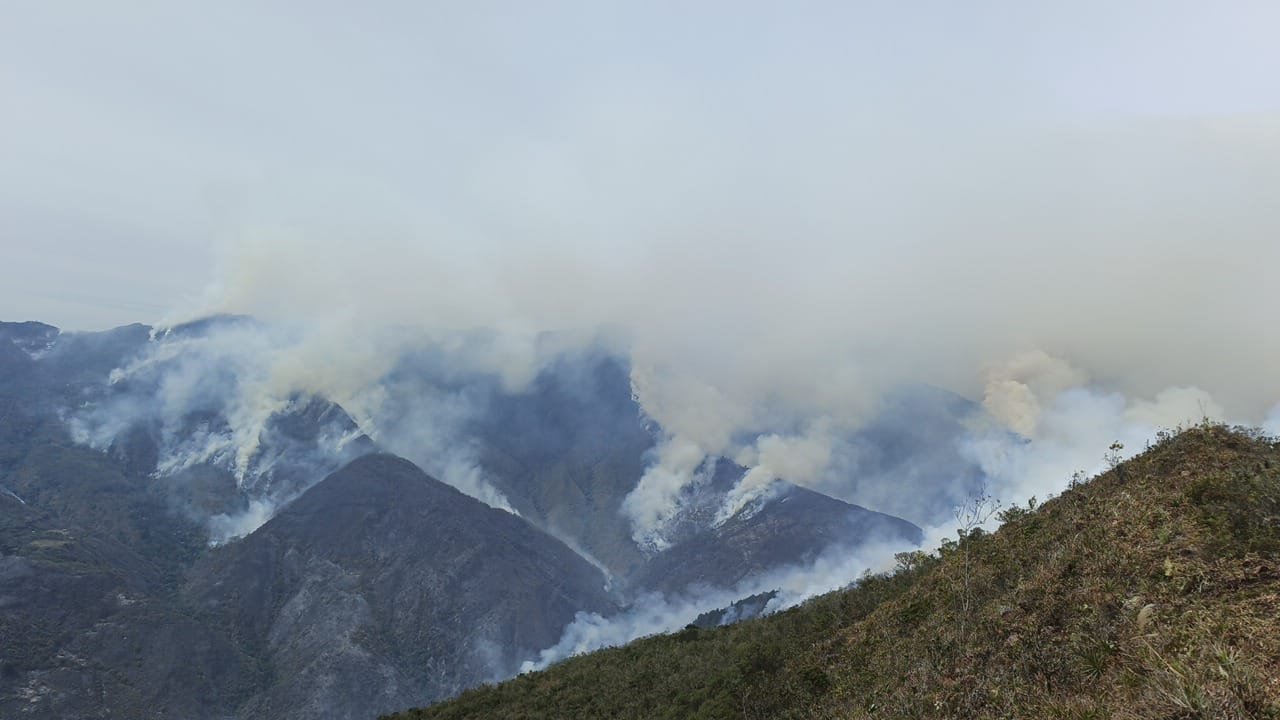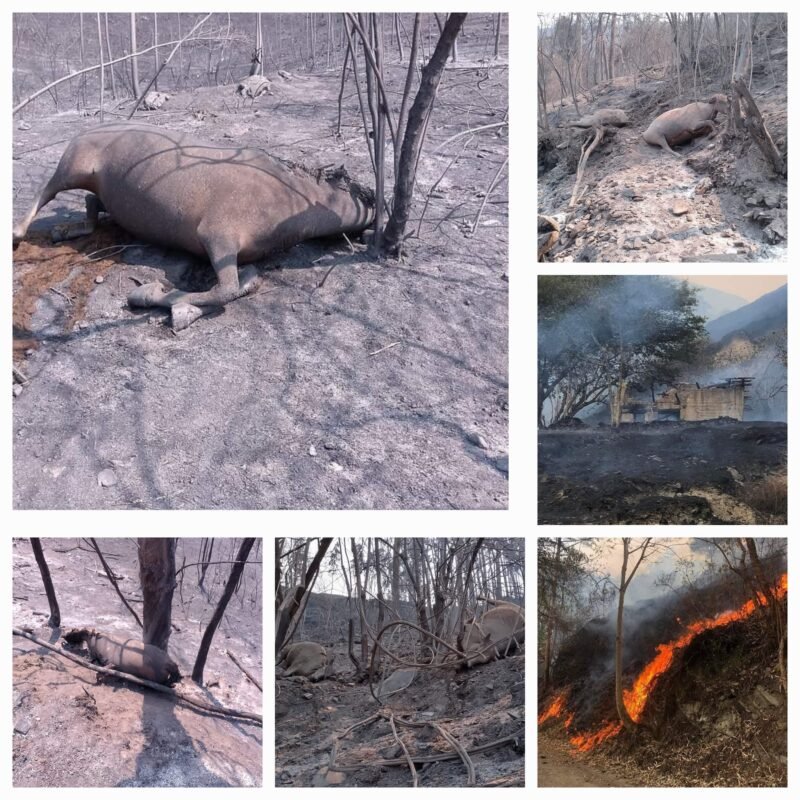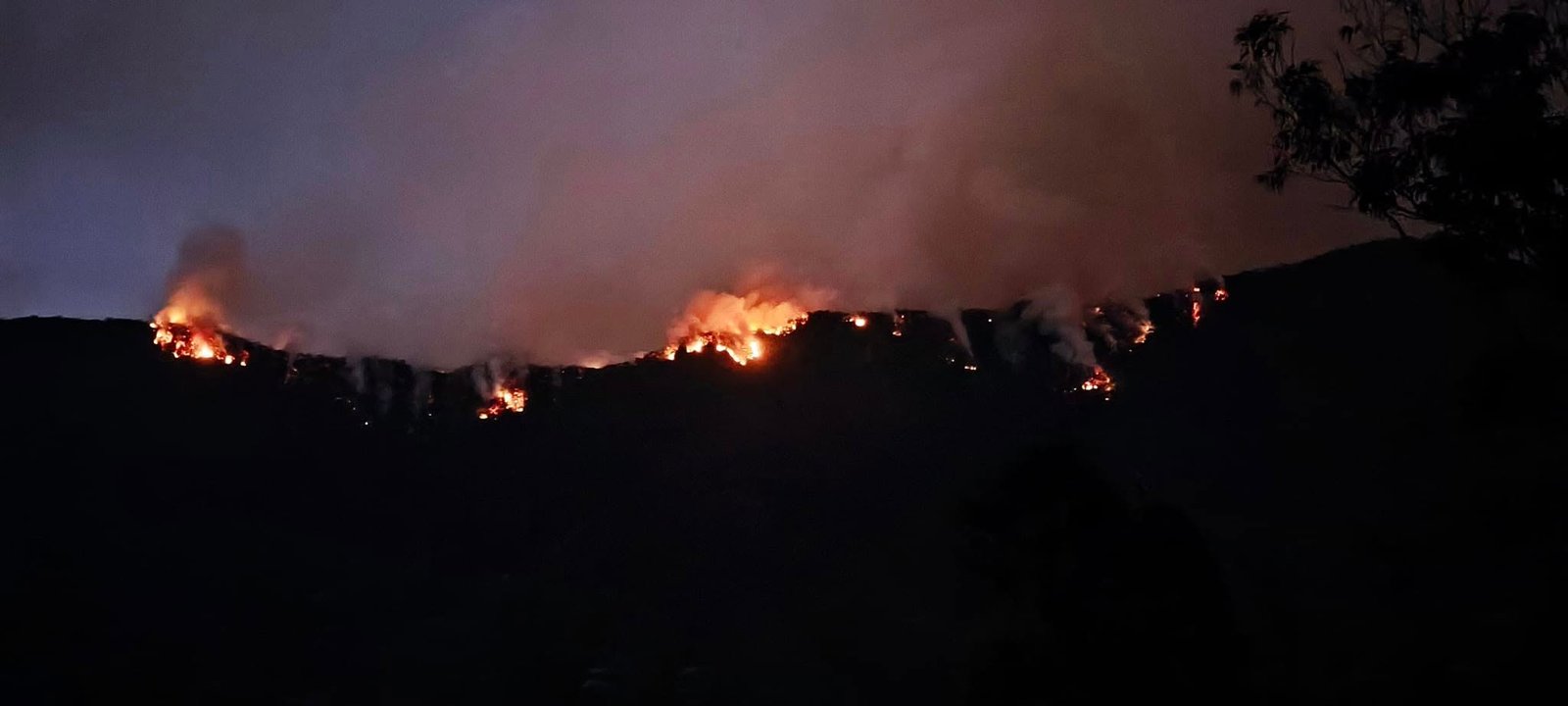![]()
Forest fires have traditionally been perceived as environmental disasters linked to climate change, inappropriate agricultural practices or human negligence.
However, in many cases, these events are related to specific economic and social interests, such as agricultural land expansion, urban development, and more recently, mining. This article explores how forest fires can be used as a deliberate strategy for land occupation, with a special focus on the Andean regions, where the possibility of finding precious metals is significantly high.
Intentional burning: A tool for land appropriation
In many parts of the world, forest fires have been used as a tool to transform forest landscapes into land available for other uses. For example, in the Amazon, the practice of burning forests to make land available for soybean cultivation or cattle ranching is widely documented. According to a report by the FAO (2019), between 60% and 70% of deforestation in the Amazon region is associated with agricultural activities, often preceded by fires.
In Indonesia, another emblematic example, palm oil companies have been linked to recurrent fires to clear native vegetation and establish monocultures. These fires, although illegal, are difficult to track and punish due to their apparently “natural” nature.
In the Andean context, although the dynamics are different, the use of fires to free up land is not a new phenomenon. In countries such as Peru, Bolivia and Ecuador, communities and private actors have resorted to controlled or uncontrolled burning to expand the agricultural frontier. However, these practices may be camouflaging darker interests, such as mining.


Forest Fires and Mining: A Suspicious Connection
The Andes represent one of the richest mineral regions in the world. Since pre-Columbian times, this mountain range has been exploited for its gold, silver, copper and other precious metals. According to a study by the United States Geological Survey (USGS)This region concentrates more than 301 TP3T of the world's copper reserves and a significant portion of gold and silver reserves.
The process of mining exploration and exploitation often requires the removal of native vegetation to install machinery and carry out excavations. In areas where open-pit mining is common, prior deforestation is practically inevitable. This is where forest fires can play a suspicious role.
One case in point occurred in the Cajamarca region of Peru. In 2017, a forest fire affected more than 3,000 hectares of forests and grasslands in areas adjacent to mining projects. Environmental organizations denounced that these fires facilitated the expansion of mining activities by eliminating protected ecosystems that could serve as legal barriers to new concessions.
In Ecuador, fires have been documented in areas close to mining projects in Zamora Chinchipe, one of the richest mineral-rich provinces. Although no direct evidence has been presented that these fires are related to mining, the recurring pattern has raised suspicions among local communities and activists.
Social and Environmental Impacts
The use of fires to clear mining land has devastating implications for both ecosystems and the communities that depend on them. Fires eliminate essential habitats, reduce biodiversity and contribute to greenhouse gas emissions. They also displace rural and indigenous communities, who lose not only their livelihoods but also their cultural connection to the land.
An emblematic example is the case of the Shuar indigenous peoples in Ecuador, who have denounced that fires in their ancestral territory are linked to mining interests. These fires not only affect their way of life, but also destroy primary forests that are vital to the ecological balance of the region.

Forest fires in the Andes: A phenomenon of high incidence
In the Andes, forest fires are not isolated events. According to the International Research Centre on the El Niño Phenomenon (CIIFEN)Climate change has increased the frequency and intensity of these fires at higher altitudes. However, some experts argue that this trend cannot be explained by natural causes alone.
The geology of the Andes makes this region especially attractive for mining. Here, the possibility of finding precious metals and other mineral resources is much higher than in other parts of the world. This raises the question: could fires in Andean areas be used as a strategy to facilitate mining?
Mining exploration and exploitation: A hidden driver?
Mining often requires geological surveys and exploratory drilling. These activities may face environmental restrictions when carried out in forested or protected areas. Forest fires, by transforming a forested area into degraded land, can facilitate obtaining permits for mining activities under the pretext of “economic recovery” of affected areas.
In Colombia, for example, a report by Human Rights Watch (2021) He stressed that in mining regions such as Antioquia and Chocó, fires have preceded the expansion of extractive activities. Although a direct connection has not been proven, the temporal and spatial coincidence does not go unnoticed.
What can be done?
The connection between forest fires and illegal or controversial economic activities, such as mining, requires urgent attention. Below are some strategies that could be implemented to mitigate this problem:
Satellite Monitoring
Technologies such as Sentinel and Landsat satellites make it possible to identify fires in real time and analyse historical patterns that could link them to specific economic interests.
Strengthening Legislation
Governments must tighten laws regulating mining and agricultural activities in fire-affected areas, ensuring that these are not used as an excuse to justify new concessions.
Community Participation
Local communities are the first to notice suspicious patterns. Including them in monitoring and decision-making can be key to preventing the deliberate use of fire.
Transparency in Mining Concessions
Publishing maps and data on mining concessions and their relationship to areas affected by fires can increase public pressure on responsible actors.
References
- Food and Agriculture Organization (FAO). (2019). The State of the World's Forests.
- Human Rights Watch. (2021). Mining and Environmental Devastation in Colombia.
- United States Geological Survey (USGS). (2020). Andes Mineral Resources Report.
- CIIFEN. (2020). Impact of Climate Change in the Andes.
- Human Rights Watch. (2019). Environmental Conflicts in Latin America.
